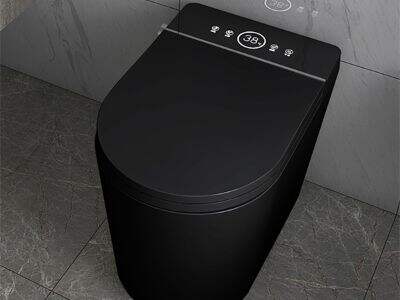From smart massage chairs to intelligent toilets, technology is rapidly encroaching on every aspect of our lives, including our bathrooms. Guangdong Sankeshu's smart toilets are gaining popularity in the market, as they are user-friendly and sanitary water-saving facilities. But do you know how the special toilets work?
Adding Smart Toilet Sensors and Assistants
Sensors and actuators are the components that make smart toilets an automatic system. Sensors act as tiny eyes and see when somebody is using the toilet. They can sense when someone is sitting down or standing in front of it. A typical actuator is like a mini helper that finds the movement through electric pathways. For smart toilets, actuators are what can open and close the lid as well as flush the toilet automatically. Sensors and actuators work together seamlessly to provide easy and hands-free use of the toilet.
How Automatic Flushing Works
Smart toilets have automatic flushing so cool. These systems employ sensors, actuators, and water valves to flush the toilet without having to pull a handle. When someone rides the toilet and then stands, the sensor detects this and sends and instruction to the actuator to flush. After that, the water valve opens and releases water into the bowl, flushing it clean. This intelligent system ensures the smart seat is clean before the next user.
How Artificial Intelligence Improves This
AI or Artificial Intelligence makes the smart toilet better for the users. AI can learn what people like, and the way they use the toilet . Such as the water temperature, the height of the seat, or to play music that a user used to enjoy. AI also identifies issues with the toilet and can alert users or maintenance technicians when something needs to be fixed. So what do you do if you want high-end, all-inclusive, luxury bidet toilet experience?AI.
The Controls Inside Smart Toilets
From the outside, a smart toilet's controls may appear relatively simple, but beneath the shell, a tangle of wires and circuits collaborate to bring everything working togther. They also end up connecting to things like pumps, sensors, actuators, water valves, AI systems. These parts need to communicate with each other, and the circuits ensure that they do, keeping the user experience seamless and intuitive. The smart toilet wouldn’t function correctly without this elaborate network.

 EN
EN
 AR
AR
 BG
BG
 HR
HR
 CS
CS
 DA
DA
 NL
NL
 FI
FI
 FR
FR
 DE
DE
 EL
EL
 HI
HI
 IT
IT
 JA
JA
 KO
KO
 NO
NO
 PL
PL
 PT
PT
 RO
RO
 RU
RU
 ES
ES
 SV
SV
 TL
TL
 IW
IW
 ID
ID
 SR
SR
 VI
VI
 HU
HU
 TH
TH
 TR
TR
 FA
FA
 AF
AF
 GU
GU
 MN
MN
 NE
NE
 KK
KK
 UZ
UZ
 KU
KU
 KY
KY
